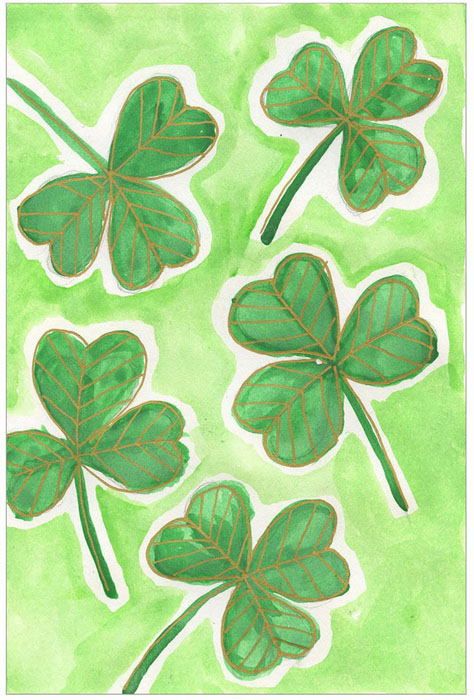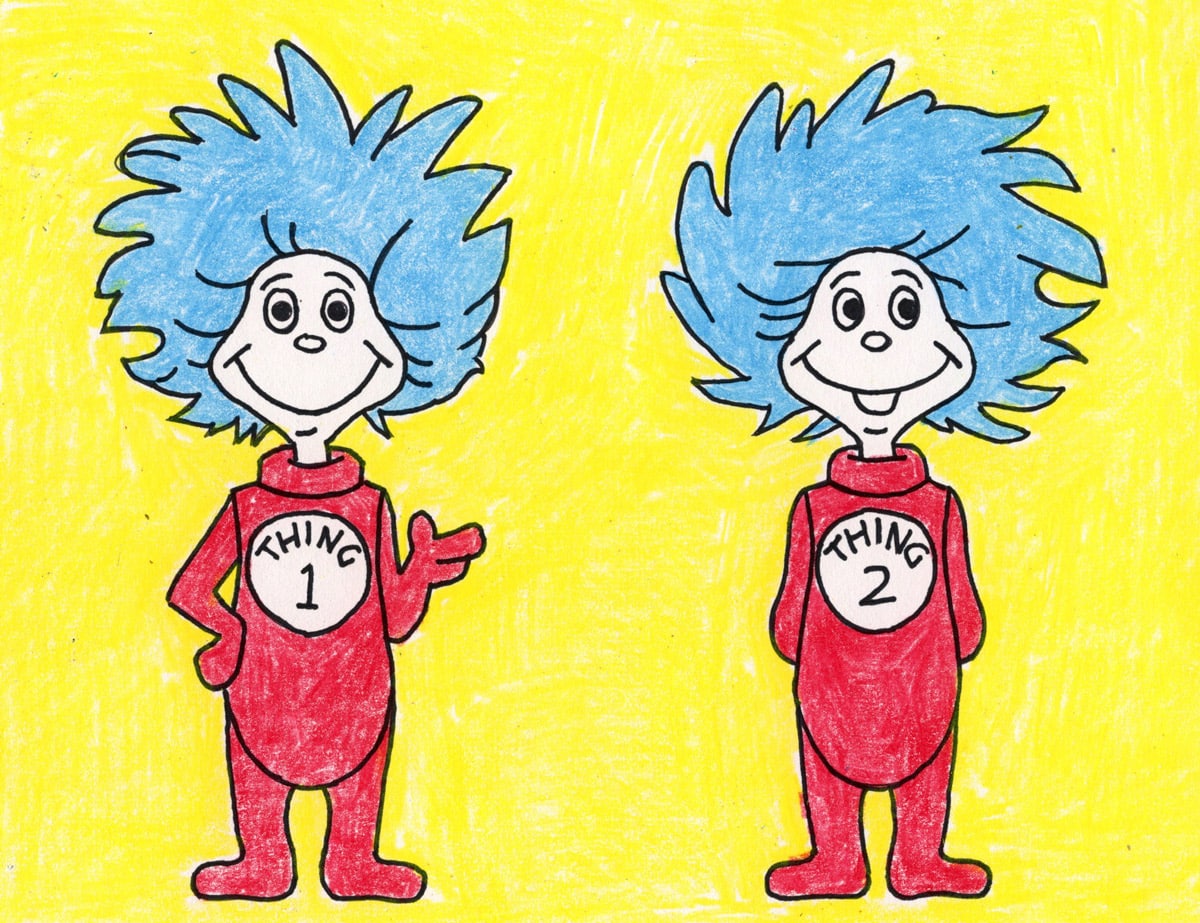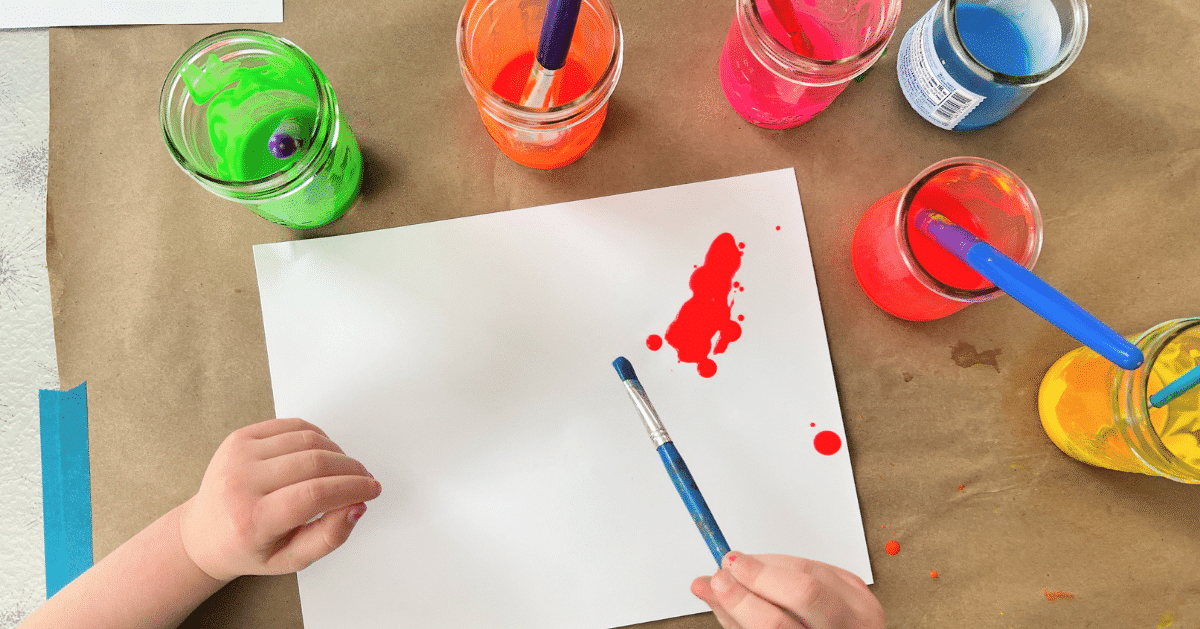
Imagine a tool that can help you tap into higher spiritual realms, connect with the divine, and awaken your true potential. That’s exactly what yantras—sacred geometrical diagrams—can bring to your meditation and spiritual practices. By focusing your awareness on these geometric designs—composed of triangles, squares, circles, and lotus petals—you can align your mind, body, and spirit, and creating a deep connection to the higher realms.
What is a Yantra?
Derived from the Sanskrit word “yam” meaning “to control” and “tra” meaning “tool or instrument,” a yantra is a geometric figure or diagram that represents an energetic or spiritual aspect of the universe. These mystical diagrams are believed to have powerful healing, spiritual, and transformative qualities and have been used for centuries in various spiritual practices, including yoga, Hinduism, Buddhism, and Tantra. They are also commonly used in Ayurvedic medicine to balance the energies of the body and mind.
Yantras are usually depicted as a combination of various two-dimensional geometric shapes, such as triangles, squares, circles, and lotus petals. They sometimes also include various mantras, symbols, and deities. Yantras are often referred to as visual mantras, as they use these symbols and shapes to evoke specific energies and states of consciousness. These divine energy tools are often used in conjunction with spiritual practices such as chanting, meditation, worship and prayer to help individuals connect with higher spiritual realms and achieve enlightenment and spiritual awakening.
The history of Yantras
The history of these sacred geometrical diagrams dates back to ancient India, where they were first mentioned in the Vedas as tools for meditation and worship. The earliest yantras were simple diagrams made of rice flour or sand, which were used by Brahmin priests during their prayers and rituals. Over time, they became an integral part of Yogic and Buddhist spiritual practices and evolved to include more complex designs and symbols, and more permanent with the use of metal, wood, and stone. Today, people still use them all over the world, and their powerful symbolism continues to inspire and uplift those who use them.
How Yantras are made
The process of creating a yantra can be quite intricate and time-consuming. They are usually made on a flat surface, such as a copper or silver plate. While some types are commercially produced using engraving or screen-printing methods, traditionally, these diagrams were hand-drawn by skilled artisans, who used precise measurements and mathematical calculations to ensure the accuracy of the design.
The process of making a yantra involves multiple stages, including sketching, outlining, filling, and consecrating. The artisan first sketches the design on the plate, using a pencil or charcoal. Next, the outline is drawn using a fine-tipped pen or brush. The outline is then filled in with various colors, using a combination of traditional pigments and modern paints.
Once the design is complete, the yantra is energized through a ceremony or ritual known as prana pratishta or “bringing life to the temple”. This involves invoking the energy of the deity or mantra associated with the yantra, and transferring that energy into the physical object through ritualistic chanting and meditation. The final step is to consecrate the yantra, which involves further energization through offerings of incense, flowers, and other sacred items.
How to use a Yantra
After cleansing your chosen yantra to purify its energy, you can use it in a variety of ways to enhance your spiritual practice and bring positive energy into your life. Here are a few common methods for using them:
- Meditation: Yantras are often used in meditation to help focus the mind and connect with the divine. To use one in meditation, sit comfortably in a quiet and sacred space and place the yantra in front of you. Gaze steadily at the center of the diagram, allowing your mind to become calm and focused. You can repeat a mantra or affirmation as you meditate on the sacred geometrical diagram, or simply allow yourself to become absorbed in its energy.
- Puja: In Tantra yoga, yantras are often used in puja, a ritual worship practice. To perform a puja, first bathe and dress yourself in clean, modest clothing. Then, set up an altar with the design positioned at the center. Offerings of flowers, rice, and other symbolic items may be made to it, along with the recitation of mantras and prayers. This practice is said to invite the divine energy of the yantra into your life and home.
- Visualization: You can visualize the geometrical shapes in your mind’s eye, using its energy to bring about positive changes in your life. This can be done during meditation or at any other time during the day when you need to focus on the yantra’s energy.
- Decorative Display: Yantras can also be displayed in your home, meditation or yoga room, or workspace as a decorative item. When chosen thoughtfully, these mystical diagrams can bring positive energy and inspiration to your surroundings. You can place one or more of them on a shelf, hang it on a wall, or even wear it as jewelry.
Different types of Yantras
There are many types of yantras, each with their own unique design, specific purpose, and unique symbolism. There are several that are commonly used in spiritual practices and are readily available for purchase. Some of the most popular basic yantras are:
- Sri Chakra: Considered the mother of all yantras, this intricate and powerful sacred geometrical diagram is also known as the Shri Yantra. It is a powerful symbol represents the union of the two primal cosmic energies of Shiva and Shakti. The design is composed of nine interlocking triangles that form 43 smaller triangles, and it is used to enhance prosperity, success, spiritual awakening, and overall well-being. The interplay of these triangles not only creates a visually stunning design, but also serves as a reminder of the interconnectedness of all things in the universe.
- Lakshmi Yantra: Dedicated to the Hindu goddess of wealth and prosperity, this yantra can bring blessings of financial stability and abundance into one’s life. This design comprises a bindu, two interlocking triangles, lotus flower petals, a circle, and a square with four gates in each cardinal direction. The interlocking triangles symbolize the perfect balance of masculine and feminine energies. Encircling the triangles are eight delicate petals that represent Lakshmi’s divine qualities of speech, transaction, departure, transcendence, bliss, absence, giving and neglect.
- Durga Yantra: Durga, a powerful warrior goddess, assists in releasing anything that no longer benefits you and acts as a shield to protect you from negative energies and harm from others. This symbol of feminine power is used for courage, strength, protection, and victory over obstacles. The upward triangles in this design symbolizes spiritual liberation, while the downward triangles represent the manifestation of spirit in the physical world.
- Ganesh Yantra: Ganesha, the remover of obstacles, is revered as the god of new beginnings and success. The Ganesh Yantra is used to remove obstacles and bring success in business, education, and personal endeavors. The six-pointed star featured in this design symbolizes balance and harmony. Through this sacred yantra, Ganeha guides us towards a state of inner peace and tranquility, urging us to find equilibrium in our lives and foster harmonious relationships with ourselves and the world around us.
- Kali Yantra: The fierce goddess Kali, holds immense significance in the realm of evolution, destruction and transformation. It serves as a tool for individuals seeking to eradicate negativity and obstacles that hinder their progress in life. Furthermore, this sacred yantra possesses the ability to enhance spiritual awareness and foster enlightenment within one’s being. Its divine energy can aid individuals in conquering their deepest fears and shielding them from the influence of negative energies that may surround them.
- Maha Mrityunjaya Yantra: Associated with the great yogi Shiva, the Maha Mrityunjaya Yantra is a powerful tool for protection, longevity and healing. It is believed to ward off all negative energy, provide inner strength and vitality, and to protect one from untimely death. Chanting the Maha Mrityunjaya Mantra while meditating on this yantra can help to alleviate physical and emotional pain, and provide a sense of peace and serenity.
- Kubera Yantra: Kuber, the god of gold, is believed to grant unlimited wealth and good luck to his devotees. This yantra is also known as “The Card of Abundance,” and is used to attract financial stability, abundance and prosperity into one’s life. It contains a series of numbers that symbolize the collective power and impact of the planets and their associated deities. These mystical numbers are arranged in a specific pattern where each row adds up to the auspicious total of 72–a lucky number to enhance prosperity and abundance in one’s life.
- Saraswati Yantra: Saraswati is the goddess of knowledge and creative energy. The Saraswati Yantra can be used to enhance intelligence, memory, learning, concentration, and academic success and to cultivate wisdom, art, music, and creative expression.
- Gayatri Yantra: The goddess gayatri is the embodiment of knowledge, wisdom, and enlightenment. Using this yantra in your meditation practice can help clear your mind and bring clarity to your thoughts, enabling you to focus on your spiritual journey and personal growth. Chanting the gayatri mantra while meditating with the yantra can deepen your connection to the goddess and enhance the benefits of your practice.
How to select a Yantra
 Whether you’re seeking clarity in decision-making, healing from past traumas, or simply yearning for a deeper connection with your inner self, the selection of a yantra can be a powerful tool in your journey towards self-discovery and growth. Different yantras represent different energies and cosmic powers, and it’s important to choose one that resonates with you and your unique needs. For example, if you’re seeking abundance and prosperity in your finances, a yantra dedicated to the goddess Lakshmi may be beneficial. If you’re seeking spiritual growth and enlightenment, a yantra dedicated to the god Shiva may be more appropriate.
Whether you’re seeking clarity in decision-making, healing from past traumas, or simply yearning for a deeper connection with your inner self, the selection of a yantra can be a powerful tool in your journey towards self-discovery and growth. Different yantras represent different energies and cosmic powers, and it’s important to choose one that resonates with you and your unique needs. For example, if you’re seeking abundance and prosperity in your finances, a yantra dedicated to the goddess Lakshmi may be beneficial. If you’re seeking spiritual growth and enlightenment, a yantra dedicated to the god Shiva may be more appropriate.
The first step in selecting a Yantra is to determine the purpose for which it will be used. Different Yantras have different energies and can be used for different purposes, such as healing, prosperity, protection, and spiritual awakening. Once the purpose is identified, begin to look at the ones that resonate with you and your intentions.
Secondly, when shopping for a yantra, pay attention to the design and symbols used in the design. Each symbol holds a unique meaning and can enhance the energy of the design. Consider the color, shape, geometric forms, and symbols used, as they can have a significant impact on the energy it emits. Look for a design that speaks to you on a personal level and resonates with your intentions.
Additionally, it is important to choose a Yantra that is made with high-quality materials and crafted by skilled artisans so that it can effectively serve its purpose. Look carefully at the details of the piece to ensure that it is authentic and accurately represents the intended deity or concept. Consider the size and the materials used and the overall aesthetic appeal.
Lastly, trust your intuition. Take some time to connect with the unique energy and vibration of different yantras, and see which one resonates and aligns with you the most.
Benefits of using Yantras
The intricate designs and complex geometry of yantras are believed to hold immense cosmic energy and power, which can be harnessed for various purposes. Different yantras have different benefits, depending on their symbol, shape, and colors. Some benefits of using them in spiritual practices include:
- Enhancing Spiritual Growth: When you meditate and focus your mind on the divine energy represented by the design, it helps to awaken your spiritual awareness and strengthen your connection to your higher consciousness. As you continue to use yantras in your spiritual practice, you may find that your intuition, inner peace, and overall sense of well-being improve.
- Attracting Abundance: There are several designs that can be used to attract wealth and prosperity into one’s life. The geometry of the yantra helps to remove negative energy and obstacles that prevent you from achieving your financial goals. It can also help to focus your energy towards attracting abundance and success, and manifesting your desires into reality.
- Boosting Health and Well-being: The intricate energy patterns in some of these divine designs are said to facilitate profound healing on both the physical, energetic, and emotional levels. By using either the Sri Yantra and the Mahamrityunjaya Yantra in conjunction with meditation and other holistic practices, you can enhance your overall well-being.
- Sharpen Your Focus and Concentration: The mesmerizing symmetries of yantras have been known to enhance focus, allowing you to tap into your inner reservoirs of productivity and performance. By concentrating and meditating on the captivating patterns with your gaze, you can effortlessly enter a state of deep focus and mental clarity.
- Shield Yourself from Negative Energies: Protecting yourself from negative energies and warding off evil is essential for maintaining a harmonious existence. Certain ones act as powerful shields against malevolent forces, fortifying your spiritual armor. When you feel like you’re surrounded by negativity, simply gazing at a Kali or Durga Yantra can help you feel more grounded and protected.
- Enhance Creativity: By meditating with a Saraswati Yantra, you can tap into the creative energy of the universe and channel it into your artistic endeavors. This practice is often employed by artists, musicians, and writers to overcome creative blocks and find inspiration. By focusing on the design, you can achieve inner peace and mental clarity necessary for accessing your creative flow.
- Deepen Your Meditation Practice: By regularly gazing and focusing your mind on the intricate patterns and shapes of the yantra, you can deepen your ability to calm your thoughts and enter a state of relaxation. Whenever you feel distracted or overwhelmed, bring your attention back to the design to center your mind and connect with your inner self. By placing a beautiful yantra on your meditation altar or in your practice space, you can infuse the room with positive energy, inspiration, devotion, and reverence.
- Energy Healing and Balance: Certain yantras can tap into the subtle energies of the universe to help activate and balance the five fundamental elements of air, water, fire, earth, and ether. There are other designs that help activate and balance the chakra energy centers in the body, which are responsible for regulating physical, emotional, and spiritual well-being.
Also Read : Nurturing New Moms: Breastfeeding & Sleep Support | MomDocs
Yantra symbols and structure
The structure of a yantra is based on the principles of sacred geometry and is composed of different symbols and shapes. These symbols include different geometric forms, Sanskrit mantras, sacred symbols, and numbers. Each symbol used in a yantra has a specific meaning and represents different aspects of the universe and our consciousness and is used to create a specific energy field. The placement and arrangement of these symbols within the yantra is also important. They are often laid out in a specific pattern that is designed to enhance the energy flow and create a harmonious balance.
1. The Dot (Bindu)
The Bindu is the central point or dot in the structure, representing the source of creation and the unity of all things. It is considered the most powerful element in the design and is surrounded by various shapes and patterns. The Bindu is the primary point of focus and concentration for meditation and helps the practitioner connect with the source of ultimate reality or pure consciousness.
2. The Outer Square (Bhupura)
A square forms the outermost boundary of the yantra, representing the material world and serves as a foundation for the rest of the structure. The outer square is typically drawn with four sides of equal length, symbolizing the four directions and the balance and harmony between them. Each side contains a gate, representing the four cardinal points and the entrance to the yantra.the outer square contains and protects the energy within the yantra, ensuring that it is not dissipated or lost. It provides stability, security, and grounding.
4. The Circle (Chakra)
A Circle is a simple yet powerful symbol that embodies the idea of oneness and the interconnectedness of all things. It represents the concept of unity, wholeness, perfection, and infinity. It is often used in meditation practices to help individuals connect with their inner selves and the universal consciousness. The Circle is a perfect representation of the cyclical nature of life, where endings lead to new beginnings, and everything is interconnected.
5. The Lotus (Padma)
The Lotus flower and its petals are a symbol of purity, enlightenment, and spiritual growth. This symbol is commonly used in floral patterns that surround the rim of the outer circle. The lotus represents the opening of the heart and the expansion of the mind towards spiritual enlightenment. It beckons us to journey inward, unlocking the hidden treasures that lie within our own hearts—the eternal wellspring of wisdom, love, and serenity.
6. The Triangle (Trikona)
 The triangle represents the three fundamental aspects of existence: creation, preservation, and destruction. It also represents the powerful energy of Shakti, the divine feminine force that pervades all of creation.
The triangle represents the three fundamental aspects of existence: creation, preservation, and destruction. It also represents the powerful energy of Shakti, the divine feminine force that pervades all of creation.
A downward-pointing triangle symbolizes the Yoni, the sacred feminine sexual organ, the supreme source of the Universe itself. The downward-facing triangle represents the element of water, which naturally flows and seeks the lowest position. Known as SHAKTI KONA, it symbolizes fluidity and surrender. It reminds us to embrace the ebb and flow of life and to honor the power of surrendering to the divine flow.
An upward pointing triangle represents the linga, the sacred phallic symbol of lord shiva, the masculine principle of creation. An upward-pointing triangle signifies the agni tattva, the element of fire in its most subtle form. Just like fire always rises upwards, this triangle embodies intense spiritual energy, often associated with shiva kona. It ignites our spiritual fire and fuels our transformation.
When these two triangles intersect, they form a six-pointed star (shatkona) which represents the union of the divine masculine and feminine energies. When two geometric forms intersect, they create a space of heightened intensity. This signifies a deeper level of interaction between the corresponding energies. These spaces are described as efficient operational fields for the forces emanating from the central point of the Yantra, the sacred geometric representation.
Within triangles, you will often find representations of mantras, powerful sacred chants. Yantra and mantra are inseparable aspects of shiva. Their combined use enhances their potency and effectiveness, creating a synergistic union of sound and form.
7. Space (Akasha)
The Empty spaces in a design also hold symbolic significance. According to Indian philosophy, absolute void is described as an infinite expanse of undifferentiated continuity, forever intertwined with the relative aspect of existence. This interconnectedness renders any notion of spatial divisions illusory and fleeting.
Within the realm of yantras, even the tiniest spaces can be symbolically imbued with a sense of “presence” and portrayed as vast as the expansive interstellar spaces within our solar system.
Sanskrit mantras and numbers
Yantras may also contain Sanskrit mantras and numbers that are believed to have a vibrational power that can create positive changes in the mind, body, and spirit. These mantras and numbers are often written in a specific way within the yantra, and their combination is said to create a specific energy or vibration that can help to achieve a particular goal or intention. Not only do these mantras have specific meanings, but the individual sounds that make up the mantra are also believed to have their own unique vibrations that can affect the energy of the yantra.
Yantra meditation
Yantra meditation is an ancient practice that originated in India and has been used for centuries to achieve spiritual growth and enlightenment. It involves focusing on a specific yantra and visualizing its intricate design in your mind’s eye. Here are the five main steps to performing this type of meditation:
- Once you have selected your yantra, find a quiet and comfortable place to sit. Place the yantra in front of you and focus on its intricate geometry. As you gaze at the yantra, allow your breath to become slow and deep, and let your mind become still.
- Focus your gaze on the bindu, the center of the design. Try not to blink your eyes and avoid fixating on the individual elements, instead embracing the expansive view of the entire yantra as it unfolds before you.
- Visualize the yantra as a portal to the divine, a gateway that will connect you with your highest self. Feel the energy of the yantra flowing through you, and allow your mind to become completely absorbed in the yantra, letting go of any thoughts or distractions. As you continue with your meditation, feel a sense of peace and inner calm washing over you. Let go of any worries or stress and allow the yantra to guide you towards a deeper sense of connection and purpose.
- When you are ready, softly close your eyes and hold the image of the yantra in your mind’s eye. Continue to breathe deeply and allow yourself to become fully immersed in the yantra’s energy and symbolism. Allow yourself to feel the power and meaning behind the yantra, and let it guide you towards a greater understanding of yourself and the universe around you.
- Lastly, gently open your eyes and take a few deep breaths. Allow yourself to come back into the present moment, feeling refreshed and rejuvenated. Take a moment to reflect on the experience and the insights you may have gained.
How to cleanse and energize a Yantra
To get the most benefit from a Yantra, it is important to keep it clean and energized. There are numerous ways to accomplish this, which can vary depending on the specific type of Yantra and individual preferences. It is important to approach this process with respect and reverence, and to set a clear intention for the cleansing and energizing of the Yantra. You can use one or more of the following techniques:
- Holy water: Sprinkling holy water on a yantra can help to purify it and remove any negative energy that has accumulated. This can be done by placing the yantra in a bowl of water that has been blessed or by sprinkling water directly on the yantra itself.
- Incense: Burning incense sticks around a yantra can help to cleanse the energy field around it and create a more positive atmosphere. Choose an incense that resonates with the yantra’s energy or use a general purifying incense like sage or sandalwood.
- Mantras: Chanting mantras while focusing on the yantra, can help to energize it and activate its power. Choose a mantra that corresponds with the Yantra’s intention or use a general mantra like “Om” or “Om Namah Shivaya”. Repeat the mantra several times while focusing on the yantra, visualizing its energy radiating outwards.
- Sunlight and moonlight: Placing a yantra in direct sunlight or moonlight can help to energize it and charge it with vital life force energy. Leave the yantra outside for a few hours during the day or night (weather permitting), depending on the type of yantra and the energy you wish to imbue it with.
- Offering: Making an offering of flowers, sweets, or other items can help to honor the yantra and create a positive connection between the user and the yantra. Place the offering in front of the yantra and meditate on it for a few moments, visualizing the yantra absorbing the energy from the offering.
- Sound: Ringing a bell or playing a singing bowl near the yantra can help to cleanse and energize it. The sound waves created by these instruments can help to remove any negative energy that may have accumulated around the yantra, while also infusing it with positive energy.
Final thoughts
Yantras are powerful tools for spiritual and mental transformation. The symbolism and types of yantras are vast and complex, and their use can help individuals achieve a greater connection to the divine. Whether used for meditation, healing, or manifestation, yantras can aid in the attainment of personal and spiritual goals. It is important to approach the use of yantras with respect and understanding, and to work with them under the guidance of a knowledgeable teacher or practitioner.
As you delve into the world of yantras, approach it with an open heart and a curious mind. Allow yourself to be captivated by their beauty and let their divine energy guide you towards the path of self-discovery. Embrace the mystical power of yantras and experience the transformative magic they hold within.





